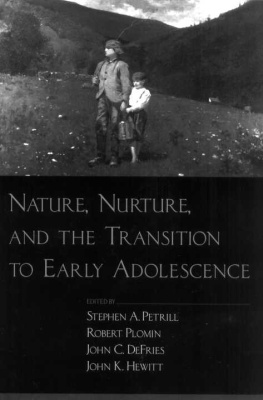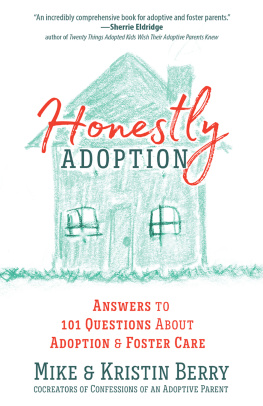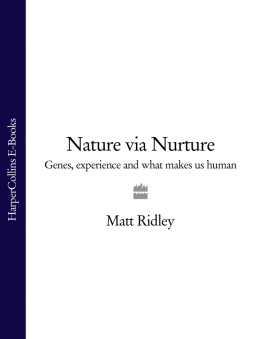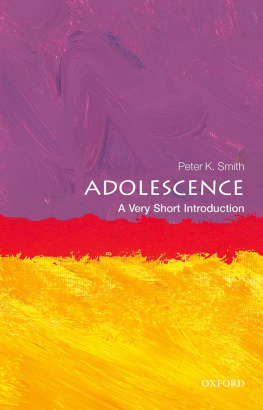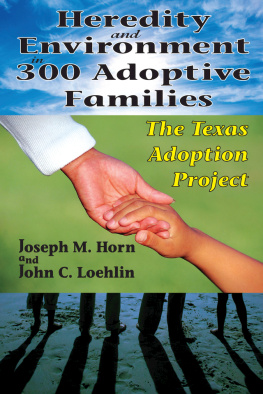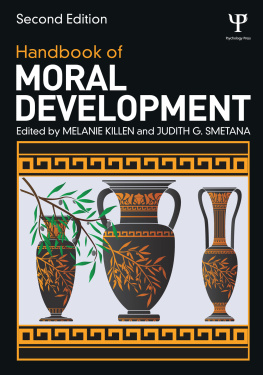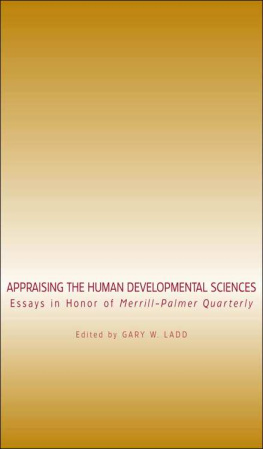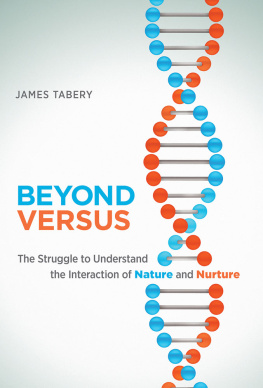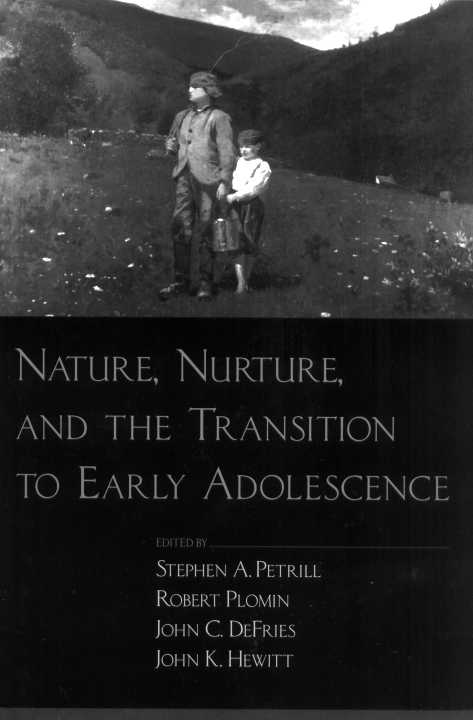Nature, Nurture, and the
Transition to Early Adolescence
NATURE, NURTURE,
AND THE TRANSITION TO
EARLY ADOLESCENCE
Edited vy
Stephen A. Petrill
Robert Plomin
John C. DeFries
John K. Hewitt




Contents
Stephen A. Petrill, Robert Plornin, ,7obn C. DeFries, and John K. Hewitt
E. G. Bishop, Stacey S. Chewy, aril john K. Hewitt
Alaricela Alaretirr, Robert Plomin, Robin P. Corley, and John C. DeFries
Sally Y. Wmb wor-th and John C. DeFries
Stephen A. Petrill and Sally-Ann Rhea
Nicholas Giardino and Richard Rende
Stephanie Schnitz
Alessandra C. Tervolino
Kirby Deater-Deckard and Shirley McGuire
Jeffrey R. Gagne, Kimberly J. Saudino, and Stacey S. Cherry
Stephanie Schmitz and Kimberly J. Saudino
Beth Manke and Coleen Carlson
Michelle Ward and Laura A. Baker
Kirby Deater-Deckard
Rebecca Hobson, Beth !Clarke, and Shirley McGuire
Kimberly 7. Saudino, ]ejay R. Gagne, and Madeline Becker
Erich L. Spotts and ]enae M. Neiderhiser
Stephen A. Petrill, Robert Plornin, John C. DeFries, mu! John K. Hewitt
Contributors
Maricela Alarcon, Ph.D.
Department of Neurology, University of California at Los Angeles
Laura A. Baker Ph.D.
Department of Psychology, SGM 501, University of Southern California
Madeline Becker
Department of Psychology, Boston University
E. G. Bishop, Ph.D.
Department of Psychology, University of Houston
Coleen Carlson, Ph.D.
Department of Psychology, University of Houston
Stacey S. Cherry, Ph.D.
Wellcome Trust Centre for Human Genetics, University of Oxford
Jeanie Clifford
Department of Psychology, University of California, San Diego
Robin P. Corley, Ph.D.
Institute for Behavioral Genetics, University of Colorado
Kirby Deater-Deckard, Ph.D.
Department of Psychology, University of Oregon
John C. Delries, Ph.D.
Institute for Behavioral Genetics, University of Colorado
Jeff ey R. Gagne
Department of Psychology, Boston University
Nicholas Giardino, Ph.D.
Department of Rehabilitation Medicine, University of Washington
John K Hewitt, Ph.D.
Institute for Behavioral Genetics, University of Colorado
Rebecca Hobson
Department of Psychology, University of Houston
Alessand'ra C. ler uolino
Social, Genetic, and Developmental Psychiatry Research Centre, London, U.K.
Beth Manke, Ph.D.
Department of Human Development, California State University at Long Beach
Shirley 11.7cGuire, Ph.D.
Department of Psychology, University of San Francisco
Jenac III. Neider-hisei; Ph.D.
Center for Family Research, Department of Psychiatry and Behavioral Science, George Washington University
Stephen A. Petrill, Ph.D.
Department of Biobehavioral Health, Center for Developmental and Health Genetics, Pennsylvania State University
Robert Plomin, Ph.D.
Social, Genetic, and Developmental Psychiatry Research Centre, London, U.K.
Richard Rende, Ph.D.
Department of Psychiatry and Human Behavior, Centers for Behavioral and Preventive Medicine, Brown University School of Medicine
Sally-Ann Rhea
Institute for Behavioral Genetics, University of Colorado
Kimberly y. Sandino, Ph.D.
Department of Psychology, Boston University
Stephanie Schmitz,, Ph.D.
Institute for Behavioral Genetics, University of Colorado
Erica L. Spotts, Ph.D.
Department of Medical Epidemiology, Karolinska Institntet, Stockholm, Sweden
Sully]. Wadsworth, Ph.D.
Institute for Behavioral Genetics, University of Colorado
IIichelle Ward, ALA.
Department of Psychology, SGM 501, University of Southern California
Nature, Nurture, and the
Transition to Early Adolescence
STEPHEN A. PETRILL
ROBERT PLOMIN
JOHN C. DEFRIES
JOHN K. HEWITT
Nature, Nurture, and Adolescent
Development
An Introduction
Man is not meant to remain a child. He leaves childhood behind him at the time appointed by nature; and this critical moment, short enough in itself, has far reaching consequences.
-Rousseau, 1957, p. 172
Adolescence as a universal phenomenon among the young of all social classes is a product of modern civilization.
Cole, 1936, p. 3
After a long period of relative inactivity, research in adolescent development has begun to flourish (Hoffman, 1996). In 1996, an influential special issue of Developmental Psychology documented not only the activity around the study of adolescent development but also the gaps in research and methodology, and the need for further research during this period of development, particularly with respect to biopsychosocial interactional processes-the nexus of biology, psychological development, and social interactions (e.g., Hoffman, 1996; Lerner, 1996; Zahn-Waxler, 1996). Adolescence is a point in human development where these biopsychosocial interactional processes are likely to be particularly intense. Adolescence is triggered by puberty, a genetically mediated event, but concluded when the individual crosses a culturally determined threshold of social, emotional, intellectual, educational, and economic competence. Some of the major developmental challenges of adolescents are developing healthy peer, parental, and intimate relationships in the context of emergent physical, cognitive, and social-emotional competencies.
Most investigations of adolescent behavioral development have been normative, focusing on average effects of adolescence in general and puberty in particular (see Brooks-Gunn, Lerner, & Petersen, 1991). Despite the fact that many of the most important developmental and social issues surrounding adolescence involve individual differences, much less attention has been given to the differences found within adolescents. Why do some adolescents develop behavioral problems while others do not? Why do some adolescents show cognitive and academic delays? Why are some families with adolescents rife with discord while other families are more harmonious?
A Focus on Genetically Informative Samples
At the heart of many of these issues is the extent to which adolescent cognitive, social, and behavioral development is the product of genetic and/or environmental influences. Although the relative balance of nature vs. nurture in adolescence has historically been the subject of intense debate (e.g., Bandura & Walters, 1959; Gesell & I1g, 1943; Mead, 1928-1973), it is now largely accepted that both genes and the environment are important to adolescent development.

